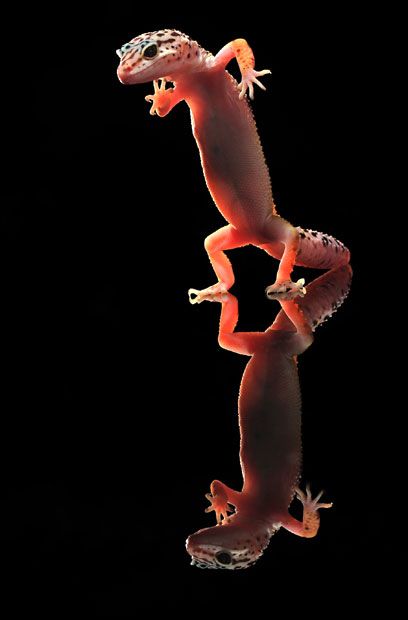Dancing Gecko Lizard
|
Geckos' toes seem to be "double jointed", but this is a misnomer. Their toes actually bend in the opposite direction from our fingers and toes. This allows them to overcome the van der Waals force by peeling their toes off surfaces from the tips inward. In essence, this peeling action alters the angle of incidence between millions of individual setae and the surface, reducing the Van der Waals force. Geckos' toes operate well below their full attractive capabilities for most of the time. This is because there is a great margin for error depending upon the roughness of the surface, and therefore the number of setae in contact with that surface.
Use of small van der Waals attraction force requires very large surface areas: every square millimeter of a gecko's footpad contains about 14,000 hair-like setae. Each seta has a diameter of 5 micrometers. Human hair varies from 18 to 180 micrometers, so a human hair could hold between 3 and 36 setae. Each seta is in turn tipped with between 100 and 1,000 spatulae. Each spatula is 0.2 micrometer long (one five-millionth of a meter), or just below the wavelength of visible light.
If a typical mature 70 g (2.5 oz) gecko had every one of its setae in contact with a surface, it would be capable of holding aloft a weight of 133 kg (290 lb): each spatula can exert an adhesive force of 10 nanonewtons (0.0010 mgf). Each seta can resist 10 milligrams-force (100 µN), which is equivalent to 10 atmospheres of pull.
|
|















